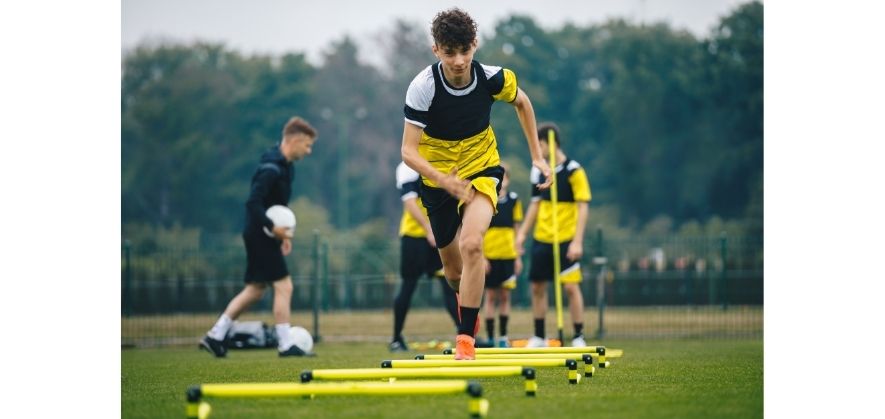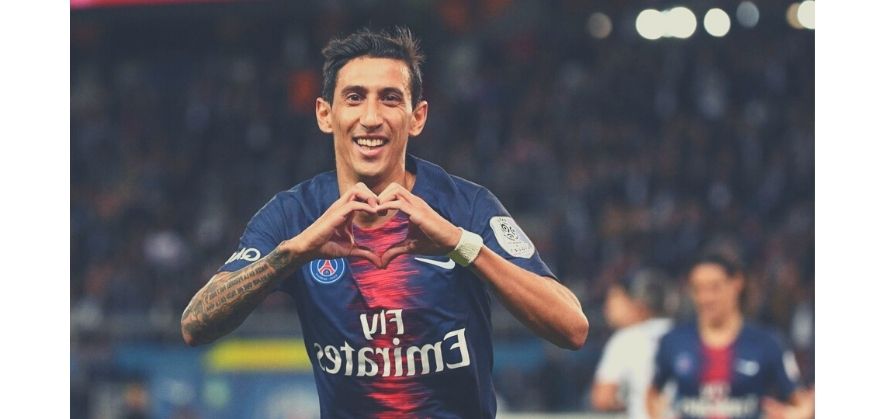One of the most common themes that you will notice when watching soccer is the slender and lean bodies of the professional athletes that participate in the sport.
Some spectators would even go so far as to say that soccer players are skinny!
And that argument would be a really solid one as far as visual evidence is concerned, because you rarely come across players who have overly muscular or stocky builds.
With the sport being one of the most intensive activities that one could engage in, wouldn’t it make sense to build up enough muscle mass to deal with how physically exerting the game is?
Apparently not!
Soccer players choose to be skinny when compared with athletes of other sports such as rugby or American football.
But why is this the case?
Well, you can read through this article to learn exactly why.
Let’s kick things off with a well summarized answer.
Soccer players have skinny bodies primarily because the twists and turns of soccer gameplay demand great flexibility, and that comes through having a slender body which can offer the agility to make those movements more effectively.
These professional athletes do look like little sticks on the field of play but, believe you me, they’re as strong and as powerful as can be!
Reasons why soccer players are skinny
In order to gain a better understanding of why soccer players favor this sort of body type, you have to start by looking at what the sport is all about.
1. Flexibility demands of gameplay

22 players – divided into equal sets of 11 – take part in this popular sport.
Within a 90 minute timeframe, teams are supposed to score as many goals as they can.
One of the most effective ways of achieving this is through careful manipulation of the soccer ball and the direction in which players move with it.
A quick change of direction could be all that’s needed to step away from a defender and find a clear pathway to the opposing team’s goal.
Which is why players need to have slender bodies that can support such rapid twists and turns.
Let’s think about it using an analogy.
You own a small sports car and a large tractor.

One day you decide to take both of these vehicles to a racing track to see which one would be the fastest to complete a single circuit.
As expected, the sports car performs admirably, handling the various bends and curves of the track with relative ease due to its lower mass and greater traction capabilities that prevent it from understeering and oversteering.
Meanwhile, the tractor simply plodges along the course at a much slower pace, especially because of all the weight that it carries.
If you transfer that logic over to soccer, you’ll see why soccer players favor slenderness over bulkiness.
A beefed-up player would have greater difficulty in remaining agile as they play, because the weight of all the muscle that they’ve built up through strength training hinders their ability to be nimble on the turn.
2. Intense physical training schedules

Secondly, soccer players are usually skinny owing to all the physical work they put in on the training ground.
These athletes train approximately five to six times per week, and because sessions generally involve a lot of cardiovascular exercises, players can be expected to trim their body fat quite considerably.
Moreover, as the tactics of the sport gradually gravitate towards systems based on strategic pressing triggers, players will naturally run more kilometers during training sessions in preparation for competitive matches.
Now, you could argue that some training days incorporate large periods of rest and recovery work, particularly after a team has played in a competitive fixture.
But even if you took that body recuperation time into account, players do rack up a lot of mileage in training that keeps their bodies lean and in good shape.
Soccer players also burn a great amount of calories through such sessions; more than the quantity that they ingest through eating meals throughout the course of a week.
Here’s an informative video which explains this reason further:
3. Increasing career longevity
You only have to take a closer look at the career of Cristiano Ronaldo to see the health benefit of being a skinnier player.
The Manchester United and Real Madrid legend purposefully lost some of his muscle mass to prolong his professional career by maintaining his levels of speed as age catches up with him.
And in 2022, the rewards of this change in his physical regime are quite evident.
The Portuguese star continues to perform at a high level for club and country despite being in the twilight of his career.
Is being skinny an advantage for soccer players?
There are arguments that support this question, as well as reasons that stack up against it.
But it’s quite evident that skinnier players are able to twist and turn with and without the ball much more easily during matches.
This is because their bodies aren’t hindered by excessive fat or muscle weight that lowers their overall agility.
On the other hand, being skinny as a soccer player does have its drawbacks.
Perhaps the most obvious one is the fact that a skinny player is easier to push off of the ball than one who has built up a lot of muscle through training.
Players get away with shoulder barges – which are allowed in soccer as long as no arm is raised to push an opponent away – so a skinny athlete will likely have a harder time retaining possession and keeping hold of the ball than a muscular player.
Here’s a small summary of the benefits and drawbacks of being a skinny soccer player:
Who is the skinniest soccer player?
You’d be forgiven for thinking that Peter Crouch is the skinniest soccer player, purely because of how lanky his body appears to be!
At a height of 2.01 meters and a weight of approximately 75 kilograms, Crouch would win this award hands down.
However, the former England international retired from the game in July 2019, so he can’t be considered the skinniest because of this very fact.
That leaves the podium for Paris Saint Germain’s Angel Di Maria, who steps up as the skinniest soccer professional player currently participating in the sport.

The Argentinian weighs in at only 75 kilograms and is just 1.78 metres tall.
Does soccer make your legs skinnier?
If the sport is played frequently enough, then yes it can have this effect!
This is because regular soccer playing is known to lower body fat, as the game consistently works muscle fibers by way of on-field actions like sprinting, jumping and quickly changing direction.
Furthermore, muscle mass in the legs and calves cannot just be gained purely through physical activity.
So, if you were a person who had a lot of weight before you started getting involved in the game, you could have experienced a dramatic change in the size of your legs over time as the layers of fat within these leg areas gradually got stripped away.
Final thoughts
This article has covered why soccer players are so skinny and how their slender body type allows them to perform at optimum levels.
As a reminder…
Soccer players are skinny partly because of the intense physical training work that they engage in as part of their daily schedule. This involves a lot of cardiovascular exercises and other forms of aerobic activity that keep them in slender shape.
Having said all that, you might want to take a look at this article which covers why soccer players are so dramatic, in addition to them being skinny!
If you enjoy the content that I create and would like to buy me a coffee, then I’d really appreciate it!
Any money that I earn through this donation will be re-invested into more content for this website.
Additionally, by sending in a donation you’ll also receive a copy of my recently released 190+ page eBook on Soccer Ball Care, as well as be subscribed to our mailing list where you’ll be regularly informed on the latest developments concerning the Soccer Whizz blog.
- Future Icons: Europe’s Emerging Midfield Maestros Set for Glory - December 4, 2023
- Kickstarting a Revolution: How Soccer Transformed the United States Over the Last Four Years - October 7, 2023
- 4-1-4-1 Soccer Formation [Analysis] - September 23, 2023

